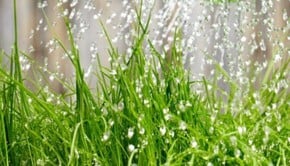Proper Pruning for Healthy Growth
Do you know how important pruning is to a trees overall health? Most homeowners only prune their trees when the branches die or start to intrude into unwanted territory such as a neighbor’s yard, sidewalk, or into an electric wire.
Trees, even young ones, should be pruned on a regular basis to ensure a strong healthy growth. Pruning regularly will also create an attractive appearance to your yard. Regular tree pruning can be done by most homeowners with the proper tools, and a little knowledge of tree varieties.
If you are planning a significant trimming or a pruning project that will require climbing, or unsteady footing, be sure to call a professional arborist for advice or assistance.
Why Prune?
Pruning may seem like an unnecessary chore, but needs to be completed for various reasons including safety, appearance, tree health and more. Check out these reasons as to why pruning should be added to your outdoor chore list:
- Safety: A tree growing too close to the sidewalk, driveway, house, or power line can cause injuries or costly repairs if it falls on people or property.
- Appearance: Do you want your yard to look nice? Or are you trying to sell your house? 80% of real estate agents have stated that mature trees have a strong impact on the curb appeal of your home, according to the Arbor Day Foundation.
- Health: Allow your tree to grow a healthier trunk by thinning the crown to increase light and air penetration so your tree can develop a stable growth pattern. The long term health of a tree can be improved by pruning diseased or storm-damaged branches. Also, you will minimize stress and lower the risk of infestation or fungus if you prune a tree that is dormant.
- Age: Older trees with dead, dying, or diseased limbs are more prone to infestations and fungus. To avoid this, inspect regularly and prune back dead or damaged branches before the problem worsens. When trees are young they should be pruned at a few years old and every 5-7 years after that.
Pruning Tools
Hand pruning shears, looping shears, or a pruning saw can be used for smaller trees or the occasional pruning. A small chainsaw designed for "recreational users" can be used for larger trees and thicker limbs. Arm and back fatigue is reduced by a maneuverable small saw, rather than a large saw that can lead to safety risks.
Conclusion:
Regular pruning can help your trees develop a strong trunk with solid, well-spaced branches. Pruning can also ensure that your trees will remain healthy, serve as a long-lasting asset to your property, and make your property look great. Follow these techniques to ensure a proper pruning:
Featured Parts and Products






